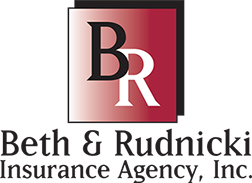27 May Reopening a business after a pandemic
As safer at home guidelines begin to lift in some U.S. states, it’s a welcome sigh of relief for many. While you may be excited to return to business as usual, it’s important to remember that it won’t be “business as usual” right away. As a business owner, it’s important to make sure you’re taking the necessary steps to keep yourself, your employees, and your customers safe in the days and weeks ahead.
Know your state’s return to work guidelines
When you are given the all-clear to head back to work, it likely won’t be everyone at once coming back into the office. It’s a good possibility that it will be a staggered approach with certain industries each taking their turn to reopen. It’s important to know and understand your state’s guidelines and procedures for reopening the economy.
Reopening a vacant building
Over time, stagnant or standing water can cause conditions that increase the risk for growth and spread of Legionella and other biofilm-associated bacteria. Before you bring your employees back into the building, you should run a test of your water system to make ensure that it is safe to use after a prolonged shutdown to minimize the risk of water-borne bacteria.
In addition to your water sources, you should also inspect machinery, air conditioning units, and all other necessary equipment to confirm they are in top shape before returning to work.
Keep health and safety a top priority
When you are able to reopen your business, it’s important to prioritize your employees’ and customers’ health and safety. The most effective protection measures are made up of a series of administrative and engineering controls.
Engineering controls include measures to protect employees from work-related hazards. Specifically for COVID-19, these include:
- High-efficiency air filters
- Increasing ventilation rates in the work environments
- Installing physical barriers where applicable, such as clear plastic sneeze guards
- Installing a drive-through window for customer service needs
Administrative controls require action by the worker or the employer themselves. In most cases, administrative controls are defined as work policies or procedures that reduce or minimize the exposure to a hazard. Some examples include:
- Reminding your sick employees that they should stay home
- Providing your employees with up-to-date education and training on COVID-19 risk factors and protective behavior (ex. coughing into your elbow, handwashing procedures, etc.)
- Providing multiple opportunities to those who need to use protective clothing on how to put it on and remove it correctly, along with how to care for it after use. Keep in mind these procedures should be clear and easy to follow.
As you begin to think about going back to business, it’s important to follow these precautions in order to keep everyone safe and sound.
If you have not already, please consider Beth & Rudnicki Insurance Agency for your Home, Auto, Health & Life Insurance needs. Please contact your Agent to discuss the many options we offer.
Personal Home & Auto Insurance is a liability providing financial protection for you and your family.
Employee Benefits and Personal Benefits are simply an advantage, privilege, right or financial reimbursement providing coverage against financial loss such as illness or injury.

